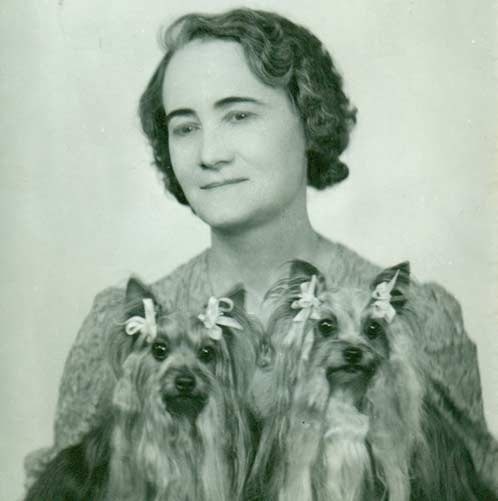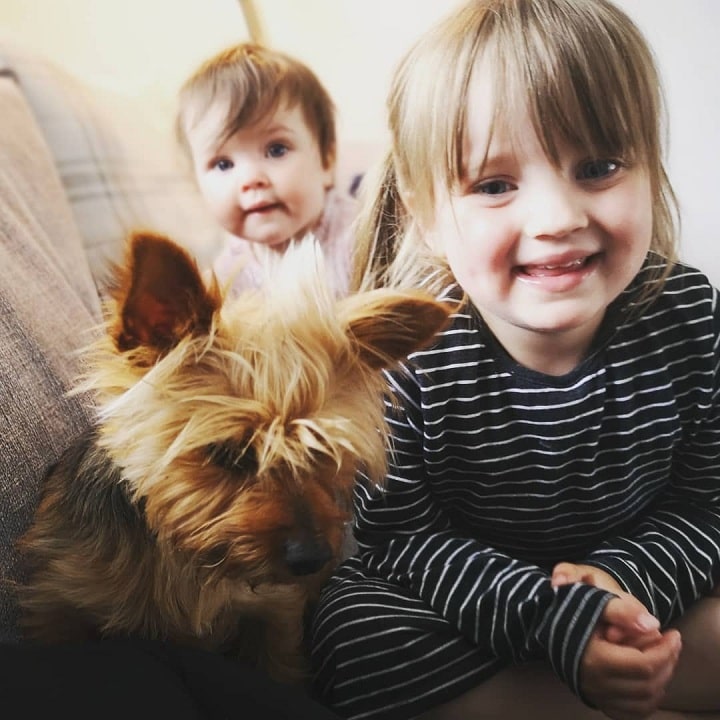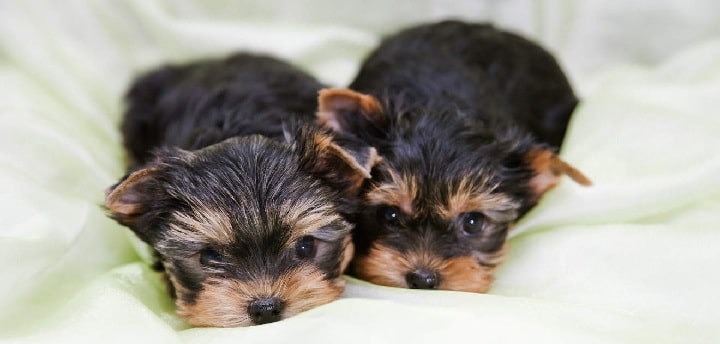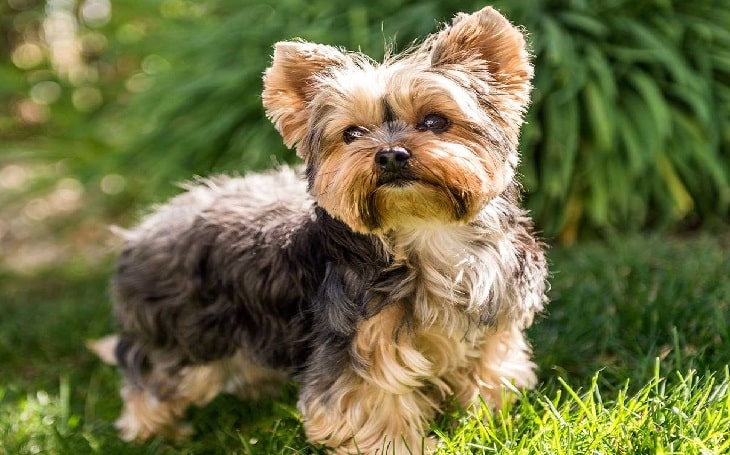Yorkshire Terrier Dog Breed Information
| Country of Origin | England |
| Nicknames and Other Names | Yorkie |
| Scientific Name | Canis lupus familiaris |
| Breed Type | Purebred |
| Group | Toy Group Terrier Group |
| Bred For | Hunting rats, rodents |
| Size | Small-sized |
| Recognized By | AKC, FCI, CKC, KC, UKC, ANKC, NZKC |
| Life Span | 11-15 years |
| Ideal Weight | 7 pounds (male and female) |
| Ideal Height | 7-8 inches (male and female) |
| Fur Type | Silky, glossy, fine, long |
| Common Colors | Black and Gold, Blue and Gold, Black and Tan, Blue and Tan |
| Markings | None |
| Availability | Widely available |
| Achievements | First Therapy Dog |
| Suitable for Apartments | Yes |
| Used in World War | No |
| Most Similar To | Silky Terrier |
Yorkshire Terrier is a small-sized dog breed that was bred as ratters before they become Victorian ladies lapdogs. Although they are a small dog, they have a lot of energy inside them. They need an active dog owner who can meet up with their energy level. They can adopt an apartment life too as they are small and does not need big space to perform their activities.
The appearance of Yorkshire Terrier is compact and sturdy. They have a silky, long flowing hair that is often trimmed short. The tail is slightly higher than the back and is of medium length. Although bred as a hunter, they make a great family companion.
Origin and History
The origin of Yorkshire Terrier is in Yorkshire, England in the mid 18th century. They were originally bred as a hunting dog that used to hunt rats, vermins, and even cats. They were owned mostly by the working class group of people but later they were famous among the rich ladies. It had become a fashionable lapdog for rich English ladies in Victorian times.

Image Source: AKC
The Kennel Club of England recognized Yorkshire Terrier in 1886. The American Kennel Club recognized this breed in 1885 as the member of the toy group.
Is Yorkshire Terrier Child-Friendly?
Yorkshire Terrier gets along with children pretty well as they are a playful and active little dog. However, they are not tolerant of small kids rough behavior and if they are in pain, they can bite them.
Many reputable breeders only suggest and sell Yorkshire Terrier to the family which has children more than 10 years of age. This is very comforting for the dog and beneficial for kids too.
So, small kids should be taught to approach dogs and to behave around them. Supervised their interaction as to avoid any kind of rough behavior from either party.

Image Source: Instagram-@mamaslps
Temperament, Behavior, and Personality
Temperament: The temperament of the Yorkshire Terrier is curious, active, and intelligent. They are always checking out things and stuff out of curiosity. They are quick and active, so they make a great companion for an active, fun loving dog owner.
Behavior: The Yorkshire Terrier has a high tendency to bark and its sharp bark might disturb your neighbor. If you leave them alone for a long time, they become destructive and start to chew on stuff. So, do not leave them all by themselves for a long time.
Personality: The personality of the Yorkshire Terrier is affectionate, loving, and fun. They are very affectionate towards their family and enjoy having a fun time with them. It is a smart dog that catches on things quickly but sometimes they are stubborn. So, establish leadership on them from an early age.
Trainability
Training Yorkshire Terrier is not a hard task to do as long as you train them gently. They need a consistent leader who can train them with firmness. They tend to respond well to positive methods of training. To encourage them and motivate them, reward with delicious treats and lots of vocal praises.
Do not use harsh words or force hand on them as this will only make them scared or aggressive. Be gentle and loving even if they make some mistakes.
Facts
- The Yorkshire Terrier long and silky hair that has a similar texture to human hair.
- A Yorkshire Terrier named smoky saved the life of a soldier from World War II.
- President Nixon owned a Yorkshire Terrier named Pasha.
Health Issues
| General Health | Healthy |
| Common Health Issues | Hypoglycemia, Patellar Luxation, Collapsed Trachea, Progressive Retinal Atrophy, Portosystemic Liver Shunt, Reverse Sneezing |
| Hypoallergenic | Yes |
| Vaccination Required | Canine Distemper, Rabies, Canine Parvovirus, Leptospirosis, Canine Parainfluenza, Kennel Cough, Canine Coronavirus |
| Shedding | None to Minimal |
| Drooling | Low Drooler |
| Grooming | Advance Grooming Required |
| Weight Gain Potential | Low to Average |
| Separation Anxiety | High Chance |
| Allergies | None |
| Diets and Supplements | Protein: 18% Fat: 8% Glucosamine Multivitamins Omega-3 and 6 Fatty Acids |
The Yorkshire Terrier is generally a healthy breed with a life expectancy of 11-15 years. However, they can face a few possible canine diseases during their lifetime.
- Dental problem: Dental problem might be seen in your Yorkshire Terrier. Look for the sign like they might not be eating properly due to toothache. Dry kibbles help to make the teeth stronger and also helps to remove the plague from the teeth. Consult a vet if the problem gets serious and your dog does not eat properly.
- Obesity: Your Yorkshire Terrier may face obesity. It can happen when you start feeding your dog more than required and they get fat. While rewarding them with treats, you should be careful not to give them too much of those treats. Obesity invites other health problems like joints pain, back pain, and even diabetes. So feed them in the right amount and not more or less.
Colors
Yorkshire Terrier comes in the following colors:
- Blue and tan
- Blue and Gold
- Back and Tan
- Black and Gold
Puppies

Image Source: The Happy Puppy Site
Size: The average height of the Yorkshire Terrier is between 7-8 inches and the average weight is around 7 pounds.
Cost: The average cost of the Yorkshire Terrier puppy is between $1200-$1500 USD if you buy from an AKC licensed breeders.
Similar Dog Breeds to Yorkshire Terrier
Visit Doglime for more information about dog breeds history, behavior, and temperament.
Tags











3 thoughts on “Yorkshire Terrier Dog Breed Information”